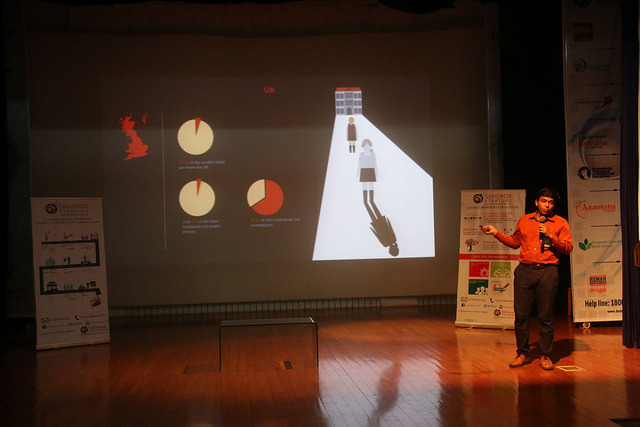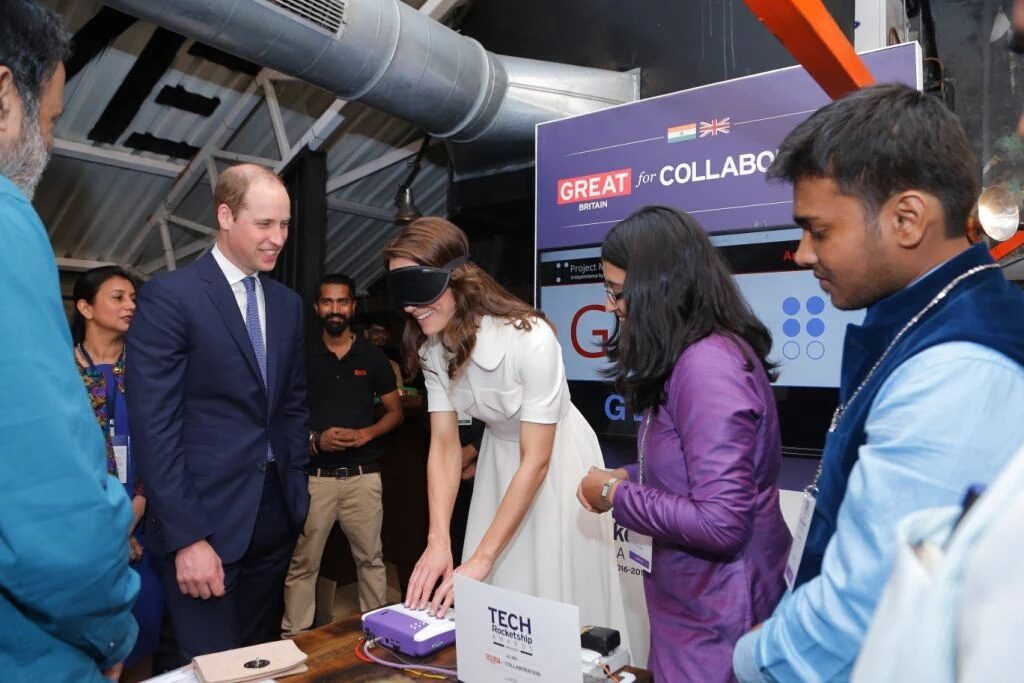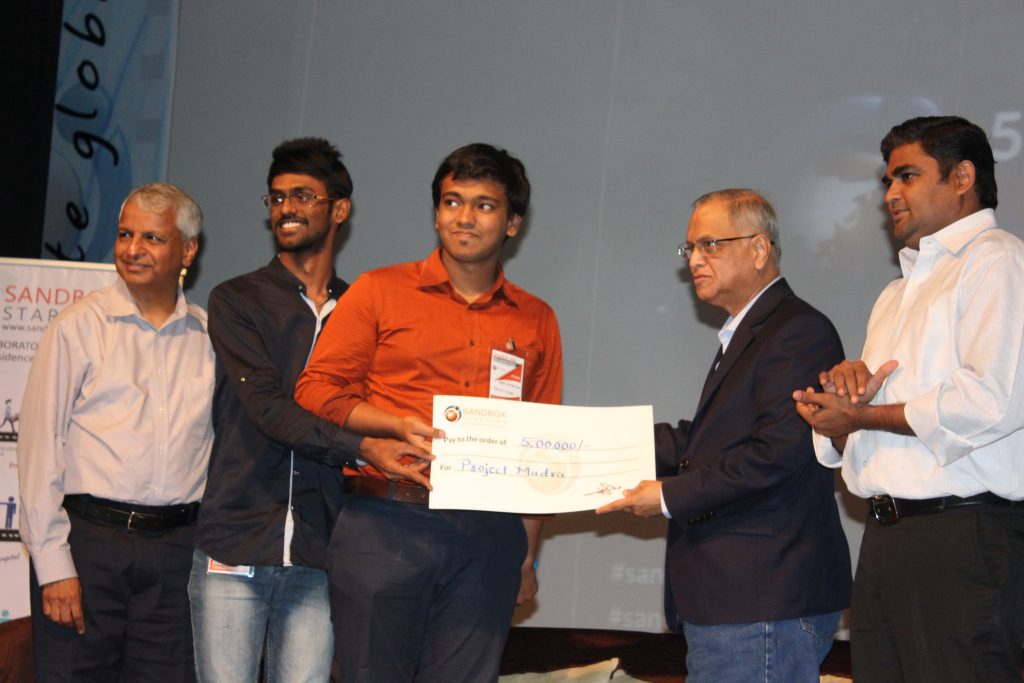Helen Keller once said, “The only thing worse than being blind is having sight but no vision.” Well, no one has ever accused Aman Srivastava and his team at Project Mudra of lacking vision. An IIS fellow, Aman is deeply dedicated to inclusivity. In his capacity as co-founder and COO at Project Mudra, Aman has played an integral role in shaping the company’s flagship product, ‘Annie’ – a game-changing piece of adaptive tech that not only helps visually impaired users to read and write braille, but actually teaches them the language.
Braille script is an important tool for blind learners world over, however, braille literacy on a global scale (including developed countries) remains low for a variety of reasons. These setbacks highlight the importance of devices like Annie, which have the potential to revolutionise education for the visually impaired.
The Birth Of Project Mudra
In class one, Aman had his first experience with someone with a visual impairment, “I had a visually impaired music teacher. He could see a bit and used magnifiers. My only association with visually impaired people is that, and Braille came in much later. We came up with an idea, went to a blind school and tested few things. It struck us that what we were building was so new, and we got excited. That’s why we went ahead.”

In Aman’s second year at the prestigious BITS Pilani, the idea of Project Mudra was conceptualised in collaboration with his friend and CEO of Project Mudra, Sanskriti Dawle. Project Mudra is aimed at making Braille accessible to all visually impaired people. Their noble purpose was recognised by the college and they received a grant for the project. Aman explains,
That was the first validation we got with a grant of 40,000 and unlimited usage of workshop and lab facilities. That was really valuable. That pushed us to associate more with the college. After that, we collaborated with several of the faculty. Colleges usually do not even look at an independent project. A few interested people took our case forward. Once we had the college’s support, we could use the facilities as frequently as we wanted. We could also visit other campuses such as BITS Hyderabad to use their facilities. We got a lot of help. We initially started as an independent project and later got support from the college. We did a few entrepreneurship courses at college and realised that we had to solve this problem, which nobody else had.
In their final year of college, the team got a much-needed boost, which took them to the UK to showcase their invention. Aman says,“We had the opportunity to demonstrate the device to the Duke and Duchess of Cambridge. This was because we had won the ‘Great Tech Rocketships’ award, which was given by the UKTI (now known as the UK Department of International Trade). They took us to London Tech Week and we spoke to a lot of investors. We were then selected for the Mass Challenge acceleration program for 3 months. Thus, the idea was validated outside the country as well.”

The experience helped shape the evolution of their work, “The Royal National Institute of Blind People got excited about this and kept suggesting new ideas. They are working for literacy solutions for the blind. Sanskriti met a person who adopts and procures literacy solutions for the blind. They gave us a lot of qualitative feedback and we are now incorporating it into the product.”
Introducing Annie, The Virtual Tutor
The name, ‘Annie’ is a fairly recognisable one in the visually impaired community. Named after Helen Keller’s iconic teacher and companion, Anne Sullivan, it’s clear that the device is aptly named. “The name is very relevant and visually impaired people associate with it quickly. People were happy because they could do ‘XYZ’ tasks easily with Annie.”
Annie is an extremely mobile device with extraordinary capabilities, Aman elaborates,
The latest version of Annie can teach a blind person to read, write, and type, which are the elements of basic literacy. Once that is done, learning other things is also possible with Annie’s different hardware modules. There are actuators to help with reading and there is audio to guide the person throughout the process. Annie is like a virtual tutor – it is the personification of a tutor.
The user-friendly nature of Annie is doubly impressive when you take into consideration the complexities of braille, “They (the visually impaired) read from left to right, but writing is from right to left. Annie has a real-time monitoring system, which can register errors while learning too. The analysis of those errors is a feature that will be included in the next version. Another popular aspect of Annie is the game feature. Every lesson is made into a 3-star game. Based on the score, stars are awarded. Nice music is also a part of the experience.”
Project Mudra believes that braille literacy will only increase the independence of visually impaired students. Aman says,
When listening to an audio book, you’re listening to somebody’s adaptation of it. Braille is the exact equivalent of reading. I read the words on paper and I make my own adaptation. When blind people read braille, they have the same power. The key reason is independence – not to be dependent on a voice and to be able to do it themselves. That is one of the reasons why we stuck with the idea of increasing braille literacy. There are studies that relate braille literacy to employment as well.
Growing Pains – Tackling Challenges Head On
Despite their innovative concept and recognition of their efforts, it hasn’t all been smooth sailing. The team has faced hardships throughout their journey – from tackling software development issues to funding issues.
The team has faced problems with adding certain features to the device, “For the speech to braille feature, we are facing issues with different accents. The prospect of speech to language is exciting and many perceived it as magical. However, we are having problems with accuracy for certain accents. Currently, we have reading, writing, typing and testing features.”

Introducing the product to the highly price sensitive Indian market has also been a major challenge. Aman explains,“The device is quite expensive – around 30,000 rupees – and very few schools were in a position to afford it in India. Since these activities are usually Rotary Club or CSR-funded, we had to convince two parties at a time. We need a huge scale to reduce the cost. So, we are currently selling it in the UK. We are working with RNIB to build premium content. We plan to look at other alternatives like subscriptions and rentals in India”
Finding Success In A New Market
The team now has made the United Kingdom its primary target market. Annie has received an overwhelming response from users in both countries. Aman says, “The response in India has been really good. In the UK, it has been pretty good too. We expected that they would already have devices like this, but they did not have anything exactly like it. We have received excellent feedback for Annie.”
The involvement and active participation of the Government towards inclusivity has become increasingly necessary in the current era of technological advancement. Developed countries have an upper hand in this regard. Aman says, “In the UK, every visually impaired person has funds allocated by the Government under the Special Education Needs and Disabilities Act to invest in their education. Developed countries are investing early into education so that they (visually impaired persons) can actively contribute to the economy. Our plan is to get accepted into the list of assistive tech devices there. Once that is achieved, we only have to work on product awareness.”
What Lies Ahead
Aman’s energy and enthusiasm are evident while discussing Project Mudra’s upcoming plans. The team has great hopes for Annie.
We plan to include an analytics part for learning. We also plan to create a lot of new content. We have content in the form of words presently. We aim to add unseen passages of different kinds to facilitate learning. The new content and analytics will also give us a competitive edge.
Innovators and social entrepreneurs like Aman Srivastava and Sanskriti Dawle are essential to India’s growth. Devices like Annie play a key role in moving our country forward, and building the foundation for a more inclusive society. Project Mudra aims at striking at the root of the problem – the education system. Aman says, “One of our aims is to be able to provide blind students with devices to enable learning alongside a sighted student.”
Technological movers and shakers like Aman are changing the face of Indian society in more ways than one. Adaptive technology development is more important than ever. These leaps and bounds leave us uncertain of what lies ahead, but one thing we are sure of – the future is a more inclusive one. Now that’s a vision we can all get behind!
Liked reading this? Then you might also like to read Anusha Reddy – Striving For Diversity In The Indian Legal Community.
If there’s any story that needs to be told, we will tell it. Write to us at contact@knowyourstar.com with your story lead, or contact us on Facebook or Twitter.